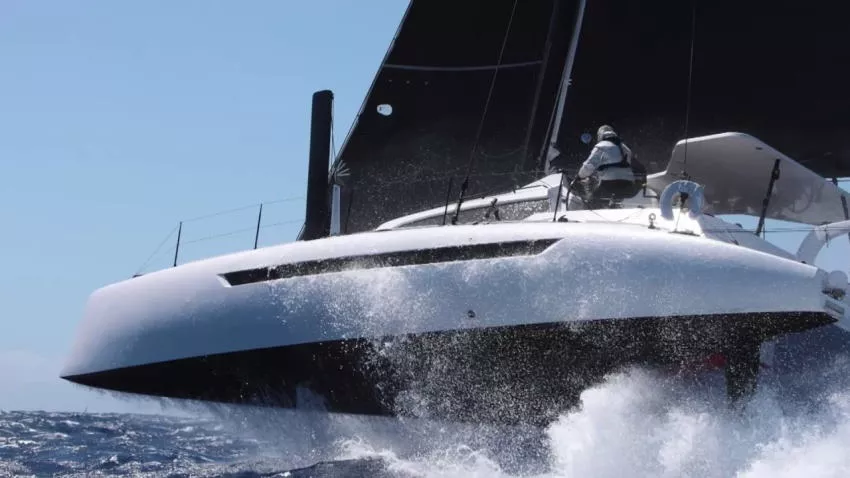Sailing is a wonderful experience that brings freedom, adventure, and relaxation. However, people with mobility challenges often find it difficult to access boats. Traditional sailboats and monohulls have narrow passages, high steps, and small cabins, making movement difficult for wheelchair users. A wheelchair-accessible catamaran is an excellent solution. It provides more space, stability, and comfort for people with disabilities. This article will discuss the design features, benefits, and important considerations for a wheelchair-accessible catamaran.
What Is a Wheelchair Accessible Catamaran?
A wheelchair-accessible catamaran is a specially designed sailing vessel that accommodates people using wheelchairs. Unlike traditional sailboats, catamarans have a wider deck, making movement easier. They also provide a more stable ride, reducing the risk of falls and discomfort. With the right modifications, a catamaran can offer complete accessibility, allowing individuals with mobility challenges to enjoy the sea.
Design Features of a Wheelchair Accessible Catamaran
Wide and Open Deck
A wheelchair-accessible catamaran has a spacious deck. The wide-open space allows easy movement without obstacles. There are no tight corners or narrow walkways, making navigation smooth for wheelchair users.
Ramp or Lift Access
A major feature of accessible catamarans is a ramp or lift. A sturdy ramp helps wheelchair users board the vessel without assistance. Some catamarans have hydraulic lifts that move wheelchairs from the dock to the deck safely.
Barrier-Free Cabins
Traditional boats have narrow doors and high thresholds that make access difficult. Accessible catamarans have wider doors, flat entryways, and open layouts. This ensures that wheelchair users can enter cabins, lounges, and sleeping areas with ease.
Accessible Bathrooms
Standard boat bathrooms are often too small for wheelchair users. Accessible catamarans have larger restrooms with grab bars, roll-in showers, and enough space for easy maneuverability.
Adapted Steering and Controls
Some catamarans have modified helm stations. These include hand-controlled rudders and automated sails, allowing individuals with limited mobility to steer the boat.
Non-Slip Flooring
To prevent slipping, wheelchair-accessible catamarans have special flooring. The surfaces are designed to provide traction even when wet, improving safety.
Seating and Rest Areas
Accessible seating is an important design feature. These areas have secure spots where wheelchair users can relax without worrying about movement during sailing. Some designs include reclining spaces for comfort.
Benefits of a Wheelchair Accessible Catamaran
Increased Freedom
Sailing should be for everyone. A wheelchair-accessible catamaran allows individuals with disabilities to explore the ocean, visit islands, and experience marine life without barriers.
Enhanced Stability
Catamarans are more stable than monohull boats. They do not tilt as much, providing a smoother ride. This is beneficial for wheelchair users who need a steady surface.
Social Inclusion
With an accessible design, wheelchair users can sail with friends and family without feeling isolated. Everyone can enjoy the trip together without limitations.
Safe and Comfortable Experience
Accessibility features improve safety. A wheelchair-accessible catamaran reduces risks and ensures that individuals with mobility challenges have a stress-free journey.
Opportunities for Adaptive Sailing
Some organizations offer adaptive sailing programs using accessible catamarans. These programs allow individuals with disabilities to learn sailing skills and take control of the vessel.
Considerations When Choosing a Wheelchair Accessible Catamaran
Size and Layout
When selecting a catamaran, consider the size and interior layout. Look for wide corridors, open spaces, and easy access between rooms.
Type of Access Equipment
Determine if the vessel has ramps, lifts, or other accessibility equipment. The right features make boarding and moving around the catamaran easier.
Safety Features
Ensure that the catamaran has secure railings, non-slip surfaces, and emergency systems. Safety should always be a priority.
Customization Options
Some catamarans allow modifications. If you need specific accessibility features, check if the vessel can be customized.
Cost and Maintenance
Wheelchair-accessible catamarans may cost more due to modifications. Consider the budget for purchasing, maintaining, and upgrading the boat.
Experience of the Crew
If hiring a crew, ensure they have experience assisting wheelchair users. Knowledgeable crew members can provide better support and improve the sailing experience.
Conclusion
A wheelchair-accessible catamaran provides freedom, comfort, and adventure for people with mobility challenges. With the right design, these vessels ensure that wheelchair users can enjoy sailing safely. Features such as wide decks, ramps, accessible bathrooms, and adaptive controls make sailing more inclusive. When choosing a catamaran, consider the size, accessibility features, safety, and customization options. With a well-designed accessible catamaran, everyone can enjoy the beauty of the sea without limitations.

